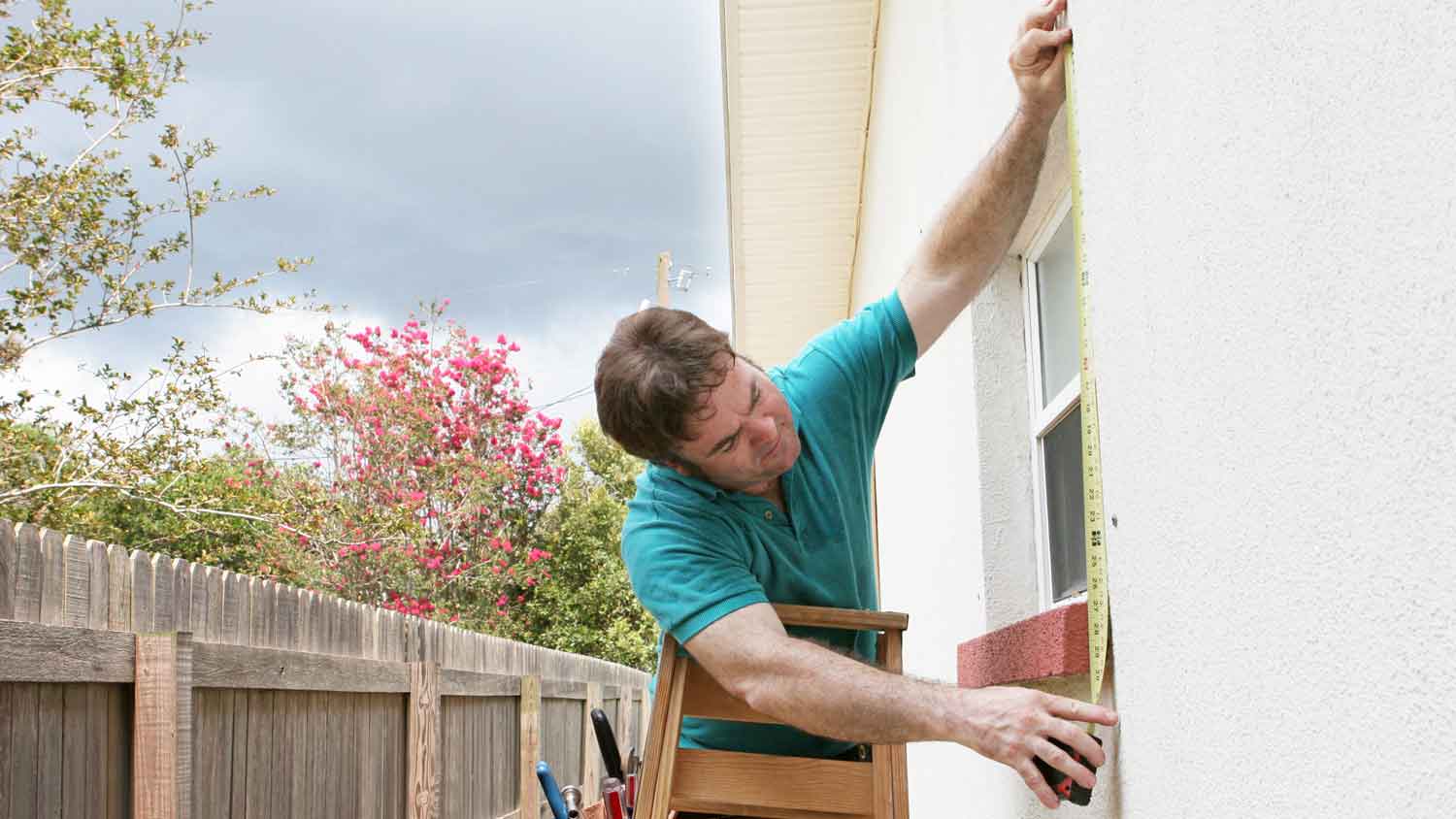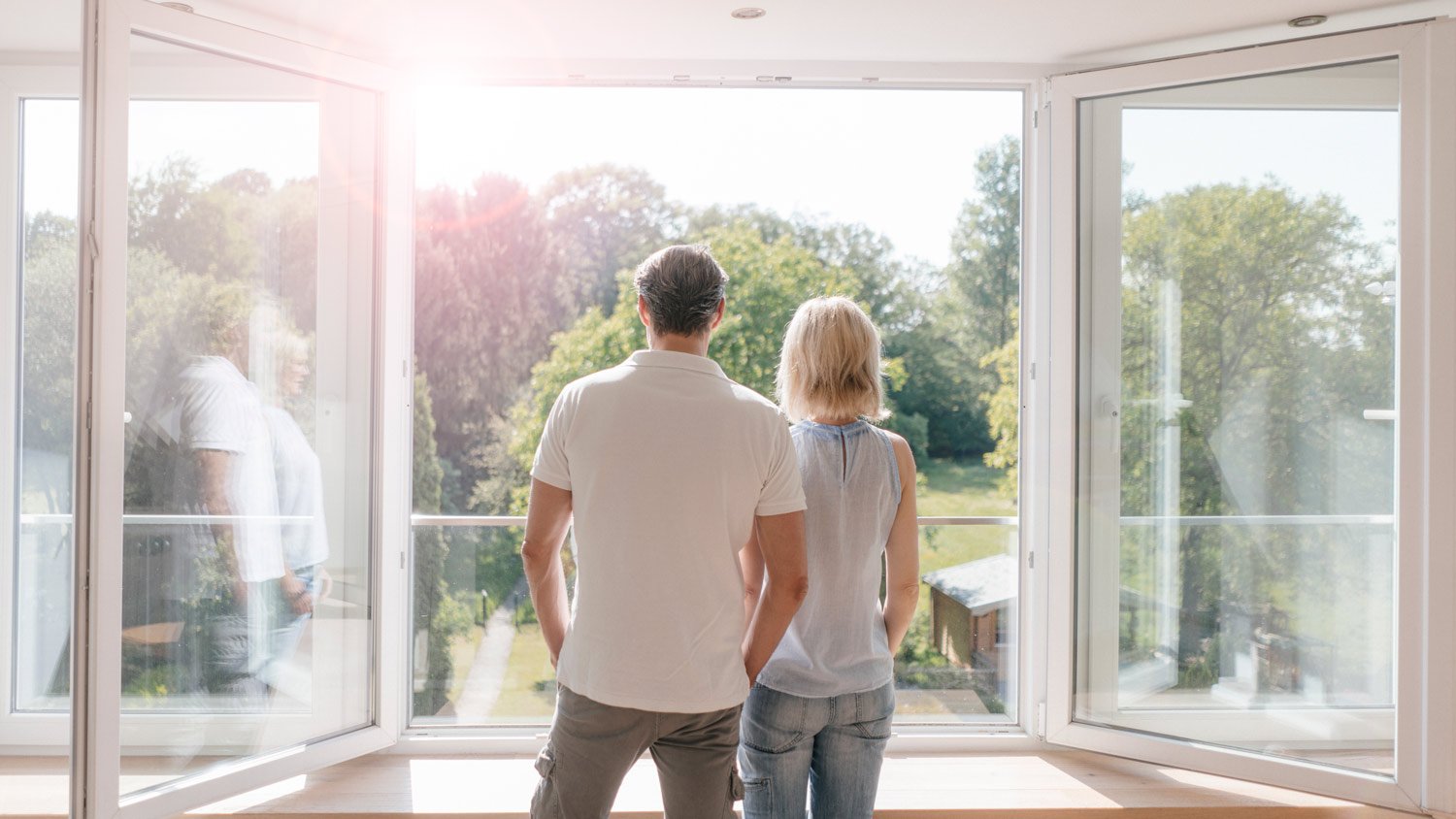What Is a Storm Window? Different Types, Pros and Cons, and More
Storm windows add extra comfort and protection against the elements


Storm windows protect against the elements, provide insulation, and block out noise.
There are two main types of storm windows: indoor and outdoor.
The storm window installation process depends on the type of storm window.
Storm window installation costs between $4,200 and $19,850.
If you want to add extra comfort to your home while gaining peace of mind before bad weather, consider installing storm windows. But what is a storm window, exactly, and what benefits do they offer over regular windows? These add-on windows provide increased protection against storms and reduce elements like noise and air leakage. Storm windows are also a great option if you haven’t replaced your windows in a while and are looking for some added reinforcement.
Explore the ins and outs of storm windows and what they can do for your home below.
What Is a Storm Window?
A storm window is a protective window placed over existing window panes. Now that you know the definition, what is the purpose of a storm window? Storm windows protect your standard windows from the elements, improve insulation, and block out unwanted noise. Some choose storm windows as alternatives to replacing a window when extra reinforcement is needed.
Keep in mind that storm windows are not made to fully protect your home from extreme weather, such as hurricanes. They can, however, keep the home more comfortable during normal or somewhat severe conditions, like hail. You can hire a window contractor to install storm windows in your home.
Types of Storm Windows
There are a few types of storm windows to consider depending on your home, budget, and goals.
Indoor Storm Windows
Indoor storm windows attach to the inside of a window via magnets, a track system, compression, or adhesives. Interior storm windows are made out of glass, vinyl, or acrylic and are surrounded by wood, metal, plastic, tape, or rubber. These storm windows are recommended for buildings with more than one level, like apartments, where it’s difficult to access the exterior.
While indoor storm windows don’t protect against elements like hail, they offer a better seal and improved energy efficiency. Plus, depending on the season, you can easily pop them in and out.
Outdoor Storm Windows
Outdoor storm windows attach to the outside of windows. The frames for outdoor storm windows are made of vinyl, wood, or aluminum. Vinyl resists sunlight but is prone to warping, and wood requires the most maintenance. Aluminum is light and requires less maintenance, but the sun can easily heat it, elevating energy costs.
Exterior storm windows are the most common type of storm windows installed, and they’re often used to preserve old windows. Outdoor storm windows are trickier to install than indoor ones, and they may not look as attractive outside your home as you’d like. Still, they offer extra protection over and above standard and indoor storm windows.
Temporary Storm Windows
Temporary storm windows are a great option for anyone on a budget. They come as a film that shrinks via heat to the frame or an acrylic panel that fits inside the window frame. These are a quick fix if you want short-term protection against bad (not extreme) weather or want to keep out cold air.
Low-E Storm Windows
According to Energy Saver, a U.S. Department of Energy-backed program, older storm windows are made of glass, but newer models include low-E coating made to reduce heat transmission. These windows are more insulating, keeping the home cool during the summer and reflecting heat back inside during the winter. Benefits of low-E storm windows include energy savings, reduced drafts, reduced noise, heat reflection, and reduced home air leakage.
Pros and Cons of Storm Windows

If you’re deciding whether or not storm windows are for you, there are several pros and cons to consider. Overall, if you have the budget for storm windows, they’re worth it to keep your home and windows safer and more efficient.
| Pros | Cons |
|---|---|
| Reduced energy bills | Not always aesthetically pleasing |
| Preservation of existing windows | Tricky to DIY |
| Lower cost than full window replacement | Maintenance required |
| Protection against external elements | Costly installation |
| Sound blocking | Potentially less light will enter the home |
| Reduced condensation | Less likely to get damaged, but if so, they’re costly to repair or replace |
| Wind mitigation | Not always the best solution depending on the location |
When to Get Storm Windows
It’s probably time to get storm windows if you live in a noisy area, haven’t replaced your windows in a while, notice constant rattling from the wind, or notice a draft near your windows. Storm windows are also a good idea if you live in a storm-prone area and want to protect the glass panes in your standard windows.
Keep in mind that, ultimately, storm windows are designed to offer added comfort. They’re not the same as impact windows, which protect against factors such as flying debris. That said, they’re an excellent option for anyone looking for increased insulation and a more comfortable home.
How Is a Storm Window Installed?
How a storm window is installed depends on whether it’s an indoor or outdoor storm window. Indoor storm windows are pressed into place without the need for extra fasteners. Outdoor storm windows involve more steps in the installation process with caulk and screws or a magnetic system.
Either way, you can attach storm windows yourself or hire a local window company. Installing a storm window can be a relatively simple process for people with window installation experience—but we recommend hiring a professional, especially if you’re looking at outdoor storm windows that involve custom fitting or are on upper stories.
Storm windows are custom-ordered to match the measurements of your current windows. There are various materials you can choose from, each with its own benefits and price. These materials will also impact the installation process.
Cost to Install Storm Windows
Storm windows cost between $90 and $400 per window, with total installation costing between $4,200 and $19,850. Costs range depending on window size, materials, and whether you opt for interior or exterior windows. The larger the window, the more expensive it is. The most affordable window frame materials are aluminum and vinyl, whereas wood costs more but offers a longer life span.
Additionally, interior windows cost less than half the price of exterior ones, fixed windows are on the lower end of the cost spectrum, and three-track windows are on the higher end.
Labor costs make up 30% to 50% of the total cost, but hiring a pro is worth it since storm window installation is a challenging project. Installing multiple storm windows at the same time may be your most cost-effective option, depending on your needs.
DIY vs. Hiring a Pro
While it’s possible to DIY the installation, there are many good reasons to leave this project to someone who installs storm windows professionally. Improperly installed storm windows can cause damage, including water intrusion, mold, and rotting insulation. Plus, installing windows is a labor-intensive job that requires careful handling of the materials and heavy lifting.
If you’re set on doing the job yourself, know that it’s easier to install interior storm windows than exterior ones. Interior storm windows aren’t as energy-efficient or soundproof as exterior windows, but they don’t change the curb appeal of your home.
Hiring a reputable window company will help ensure everything is done correctly. The company can also advise you on the window types that best serve your needs and budget.
Frequently Asked Questions
Storm windows are placed outside of already-installed windows. Regular windows are installed into a frame, offering a barrier to the elements but no special protection. Storm windows add extra protection to regular windows, reduce noise, and improve insulation. Replacing a regular window involves a different process than installing a storm window.
Storm windows provide improved insulation and soundproofing, and they can protect the glass in your windows against some damage. Storm windows provide added comfort to your home, whether they’re blocking out external elements or regulating internal temperatures. Storm windows can also help reduce energy costs by keeping air that’s too cold or hot outside.





- Storm Windows vs. Double Pane: What’s the Difference?
- Who to Call for Storm Window Installation
- What Is a Storm Door? 9 Reasons to Consider Installing One
- Types of Old Windows and When to Replace Them
- When to Replace Windows: 10 Signs That It’s Time to Start Shopping
- Do I Need a Storm Door? What to Consider
- 15 Types of Windows and How to Choose the Right Ones
- Wood vs.Vinyl Windows: What’s the Difference?
- How to Choose the Best Replacement Windows for Old Houses
- What Are Low-E Windows? Check Out This Simple Energy Efficiency Improvement










